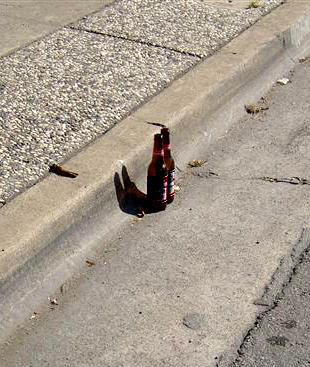Drinking data shows binge risks
 Experts have gathered data on the toll that heavy drinkers take on society.
Experts have gathered data on the toll that heavy drinkers take on society.
Research on the alcohol consumption habits of more than 100,000 Australians over a decade has found that regular binge drinkers are up to 30 per cent more likely to commit drink-driving offenses, vandalism or violence.
The analysis of data from the Australian National Drug Strategy Household Surveys (NDSHS) during 2001-2010 found that binge drinkers were significantly more likely to engage in antisocial behaviour than other drinkers.
The modelling by Monash University shows that, of the Australian drinking population included in the survey, frequent binge drinking is associated with increased drink-driving (17 per cent more), public disturbance/nuisance, damage to property or stealing (4.2 per cent more) and verbal or physical abuse (11.8 per cent more).
It found that nine per cent of the Australian drinkers are frequent bingers, and 43 per cent binge drinkers, according to NHMRC guidelines.
The NHMRC considers medium to high risk binge drinking for men to be seven standard drinks in a day and five for women, once every 12 months. The guidelines say doing this more than once a week is considered ‘frequent binge drinking’.
This means that for an average Australian drinker, the probabilities for these anti-social or unlawful behaviours among binge drinkers are doubled or tripled.
“We have clear evidence that the act of binge drinking significantly increases the likelihood of people engaging in a range of alcohol related anti-social and unlawful behaviours,” says Monash University researcher Professor Xueyan Zhao.
“What we’re seeing here is that binge drinking poses a significantly higher risk. Frequent binge drinking has been shown to significantly increase the probability for behaviours like drink-driving, public disturbance, damage to property or theft, and violence.”
The study also revealed that those most likely to be associated with public disturbance and verbal/physical abuse included males aged between 18-29, indigenous Australians, and those who were unmarried, unemployed or less educated.
However, drink-driving is equally associated with all socio-economic groups including higher educated and higher income drinkers.
Professor Zhao said that while the figures were concerning, the rates of these behaviours had since 2001 continued to decline.
“There has been a decreasing trend since 2001 for the probabilities for all negative alcohol related behaviours.”
The only demographic group that seems to defy this trend is the 60+ age group. The probabilities for drink driving or other antisocial behaviours for both the male and female 60+ groups have shown a slight increase, as baby boomers enter this age band.
The study was funded by an NHMRC project grant and is part of a broader research program by Professor Zhao and her team to provide evidence from data to inform alcohol related policies.







 Print
Print